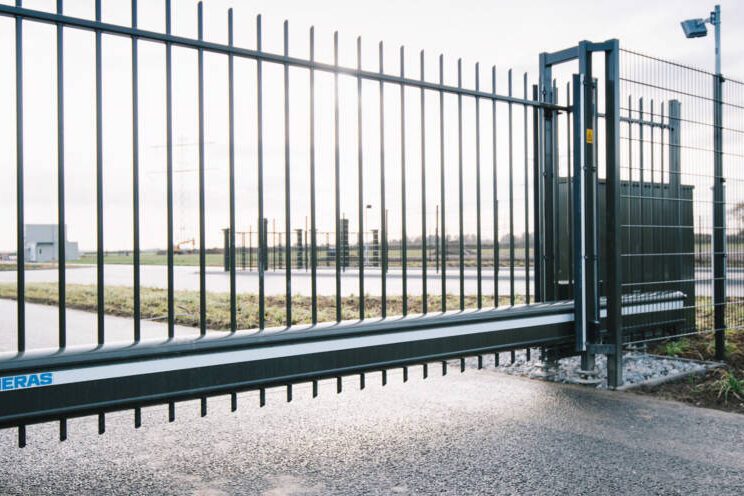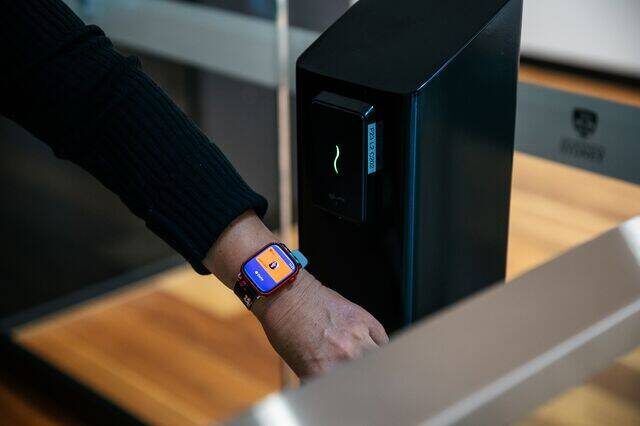Rebecca Spayne catches up with Peter Jackson, Managing Director of Jacksons Fencing to explore how retail businesses can better protect their premises with physical security
Physical security is the protection of personnel, inventory, hardware, software, networks and data from physical actions and events that could cause serious loss or damage to an enterprise, agency or institution. This includes protection from fire, flood, natural disasters, burglary, theft, vandalism and terrorism. While most of these are covered by insurance, physical security’s prioritisation of damage prevention avoids the time, money and resources lost because of these events.
The physical security framework is made up of three main components: access control/perimeter protection, surveillance and testing. The success of an organisation’s physical security program can often be attributed to how well each of these components is implemented, improved and maintained.
In this feature, we will take a look at the first element, access control and perimeter protection and analyse how it plays a primary role as the first point of call in any multi-layered security approach for retail property.
First line of defence
Perimeter protection is the first line of defence to detect or deter an intruder. The most common points equipped with sensing devices for premise perimeter protection are doors, windows, vents, skylights, or any opening to a business or home. Since over 80% of all break-ins occur through these openings, most alarm systems provide this type of protection. The major advantage of perimeter protection is its simple design. The major disadvantage is that it protects only the openings of a property. If the burglar bursts through a wall, comes through the ventilation system, or stays behind after closing, perimeter protection is useless.
Fences, walls, intelligent detection technology, and state-of-the-art surveillance measures: today, the options relating to comprehensive perimeter protection of a property are more diverse and complex than ever. Whether at airports, in small or medium-sized companies, in forensics institutions or correctional facilities, industrial properties with high security requirements or even a retail property, appropriate protection measures help to prevent or minimise damage. They contribute to early detection of attacks and support a rapid initiation of countermeasures in the event of imminent danger.
“When it comes to perimeter security, retail centres have unique requirements and challenges. By their nature, malls and shopping centres should offer an open and welcoming environment, one where shoppers feel at ease to browse at their leisure knowing that they, their belongings and their cars are safe” says Dan Edwards, Betafence South Africa.
Unfortunately, retail centres have become increasingly popular targets for both petty and organised crime, ranging from smash and grab incidents to armed robberies, necessitating an effective and practical security system.
A retail centre’s first line of defence is its perimeter boundary. An effective perimeter boundary must:
- Secure the area (particularly during non-trading hours, when access should be limited to security personnel).
- Control access to parking areas, public transport areas, and the centre itself.
- Act as a deterrent to criminal elements.
- Offer a sense of security without creating the feeling of an enclosure.
- Add to the aesthetics of the retail centre.
- Protect back-end access for deliveries and inventory.
These fundamental functions can only be achieved through an integrated perimeter protection solution – of which the security fencing plays an integral role.
The primary function of the security fence is to control flow to the retail centre. Controlling flow is important for both pedestrian and vehicular traffic, as it enables manned and electronic security measures to be concentrated in a few key areas. This ensures that the activities at entry control points can be more easily monitored, enabling security personnel to identify and react to any potential risks or threats.
One instance where the control of flow at a retail centre is particularly useful is the deterrence of smash and grab attacks. With a perimeter fence in place and limited access points, perpetrators would find it increasingly more difficult to simply pull up in a car along the boundary, carry out the smash and grab, and quickly exit the scene unhindered.
Another functional application of perimeter fencing at a retail centre is where a multi-storey car park is in use. In many situations, the ground floor of this type of car park is often easily accessible. The solution offered on an increasingly frequent basis is to ‘clad’ the area between the ground level and the first level. This ensures that the car park can only be accessed through designated access points.
Fencing also offers a practical solution for the division of areas at a retail centre – the most common of which is the goods receiving area. Through the installation of a fence around this area it is both clearly divided from the rest of the centre and secured during deliveries, thereby reducing the chance of shrinkage and theft of goods.
Security Buyer catches up with Peter Jackson, Managing Director of Jacksons Fencing to discover exactly how fencing can help protect retail properties.
How does the current climate impact perimeter protection?
“When people are feeling the pinch during an economic downturn, it follows that shoplifting, theft and burglaries can surge. Usdaw, the retail workers’ union, has reported that shoplifting is up 21% this year largely driven by the cost-of-living crisis. While more help from the Government to support retail workers and the businesses shoplifters target is certainly needed, boosting practical security measures can go a long way to deterring these kinds of crimes in the first place.
“British retailers spend millions on tools to deter and catch shoplifters inside stores, from CCTV and security guards, to electronic article tagging and alarms. But there are other threats at play beyond the shopfloor. For many large town centre stores and supermarkets, and units on retail parks, the rear doors and delivery areas can be targeted by criminal gangs. It’s not uncommon for thefts to be perpetrated from pallets or cages that have been unloaded off lorries and are waiting to be moved into the building. After-hours break-ins are a risk for all store owners, particularly over the festive season when a lot of high value stock has been delivered to shops and supermarkets.
“Anti-social behaviour can also be a problem. For instance, in Derby this year to protect staff and deter groups from hanging around outside the store, leaving litter, and disturbing the peace. The supermarket chain said “dangerous and disturbing” items were often found outside the store, including weapons and hypodermic needles. Aldi bosses said at the time that the additional fencing was seen as an “essential measure” to protect the community.”
How can fencing be designed to stop theft and damage of retail property?
“Begin with a risk assessment, establishing potential weak spots that need to be protected. Identifying the areas most likely to be targeted allows for ‘target hardening’, where physical security gets ‘harder’ the closer to the target it gets.
“Effective perimeter security for these sites should be specified in line with the potential threats, the site itself and its topography. One of the key challenges when establishing security fencing for retail sites is deterring intruders while making access easy for customers and staff. What’s needed is fencing that isn’t too austere in appearance, but nevertheless, does a good job of shielding external parts of the site from harm and intrusion.
“Difficult-to-climb security fencing provides an obstacle that will deter thieves, vandals and other intruders from gaining access to a retail business. It’s therefore important to select a fence high enough, and sturdy enough for the job.
To read the full exclusive and other news stories and exclusives, see our latest issue here.
Never miss a story… Follow us on:
![]() Security Buyer
Security Buyer
![]() @SecurityBuyer
@SecurityBuyer
![]() @Secbuyer
@Secbuyer
Media Contact
Rebecca Morpeth Spayne,
Editor, Security Portfolio
Tel: +44 (0) 1622 823 922
Email: editor@securitybuyer.com









